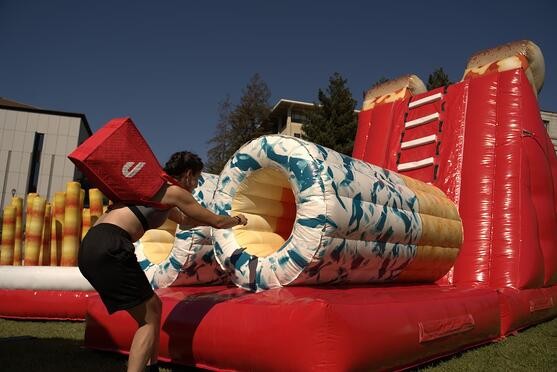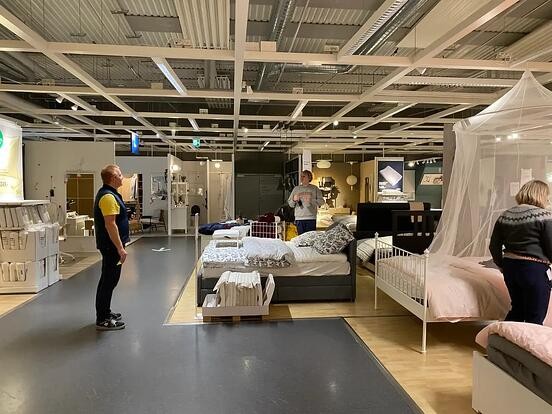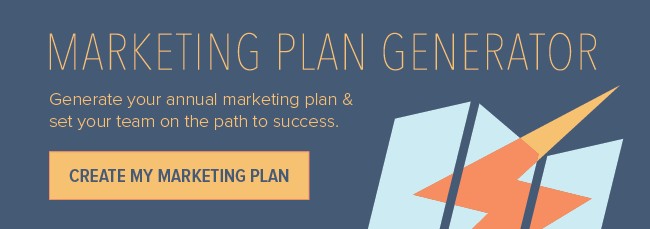Experiential marketing involves inviting your audience to interact with your brand in a real-world situation.
These experiences are often hands-on, exciting opportunities that help businesses engage with attendees in a way that is different from interactions they may have online.
Read on to discover new data about how businesses are investing in experiential marketing and how you can leverage the strategy in your processes.
Will brands invest in experiential marketing?
HubSpot Blog’s Marketing Industry Trends Report surveyed 1,000+ global B2B and B2C marketing professionals and asked them about the marketing trends they currently leverage.
29% of marketers say they use experiential marketing in their roles, and of those who use it, 51% say it is the second most effective trend they leverage. 83% of marketers also plan to continue investing the same amount or increasing their experiential marketing investments in 2022.
So, yes, brands will continue to and increase their investments in experiential marketing. Let’s discuss why.
Why are brands investing in experiential marketing?
Real-life experiences help foster a sense of connection that brands cannot mimic digitally. Esther Sauri, a marketer at Linkilaw Solicitors, told Business News Daily that experiential marketing is effective because humans are emotional beings: “When a brand connects with us in an emotional way, we not only buy it, [but we become] loyal customers.”
Marketers also say that continued investments in experiences are due to consumers’ desire for connection and community with their favorite brands after a few years of digital-only options. Brett Hyman, founder and president of NVE Experience Agency, told BizBash that, while production and safety remain key, “2022 will be about creating the best in-person experiences that focus on a return on their time…it’s important we prioritize experiences as a way to foster the human need for connection.”
Health and safety measures still remain critical for brand activations and experiential marketing experiences, though, so Cara Kleinhaut from AGENC told BizBash that leaning into outdoor environments is a best practice: “Giving consumers an exciting and visually stimulating space to explore, especially one with great air ventilation and where we can time and regulate the throughput, is very attractive to consumers right now in my view.”
Affordable Experiential Marketing Examples
1. Harry Styles - Harry’s House
Musician Harry Styles released an album, Harry’s House, in May of 2022, and promoting it involved launching pop-ups in cities across the world.
People could visit the pop-up and buy merchandise, but the main attraction was a life-size version of the album cover that people could take pictures in as if they existed within Harry’s House. The image below features his album cover on the left and a fan recreation on the right.

It was an affordable way to develop a connection with audiences who felt like they were part of his world by creating their version of the album cover. It also generated free marketing for the album, as people were encouraged to share images of their experience at the pop-up online.
2. DoorDash - Dash Course
Delivery service DoorDash created an experiential experience to draw attention to the hard work its delivery drivers do daily to seamlessly deliver food. The experience featured food-themed inflatable obstacle courses where the brand challenged people to leap over hot dogs or dive through the center of a donut.

The inflatables were set up in a public space on college campuses, generating brand awareness from people simply walking by, a free form of marketing.
3. IKEA Sleepover
It was a cost-effective experiential marketing event for the business as it simply used its existing products, like beds, pillows, and bedding, to help sleepover attendees build their own sleepover setup.
A Facebook group called “I wanna have a sleepover in IKEA” inspired the business to take action on this request by randomly selecting 100 members from the group and inviting them to a sleepover.

The sleepover was a hands-on, interactive experience that inspired a new form of connection with attendees, and it essentially offered people a free trial of its products. It was also cost-effective marketing, as it simply used its existing products, like beds, pillows, and bedding, to help sleepover attendees build their own sleepover setup.
It was also a cost-effective way to connect with audiences as it simply used the products it already offered, like beds, pillows, and bedding.
Experiential Marketing Helps You Form Emotional Connections
If you’re hoping to deepen the relationships you have with your target audience, events, experiences, and interactions help you establish emotional connections that are much deeper than what can come from sending an email or a targeted Instagram ad.

